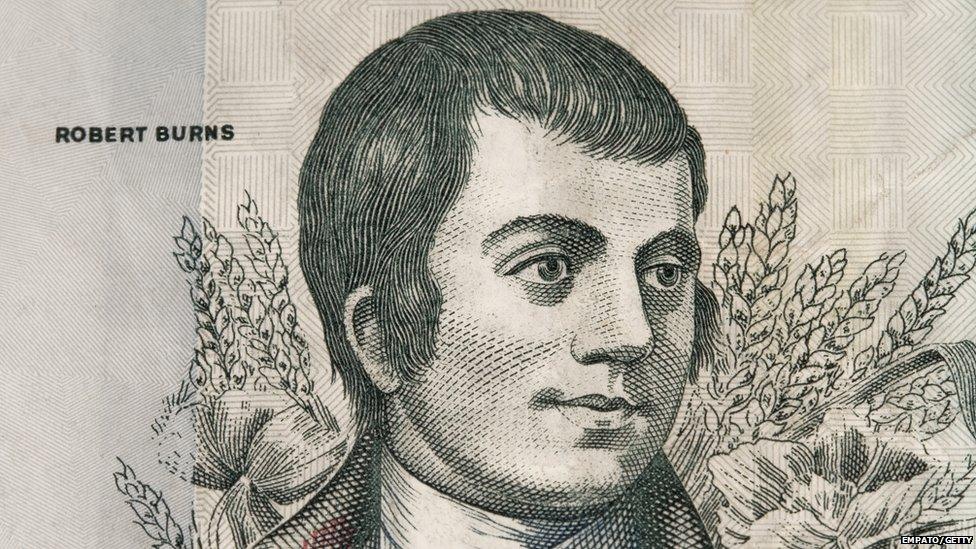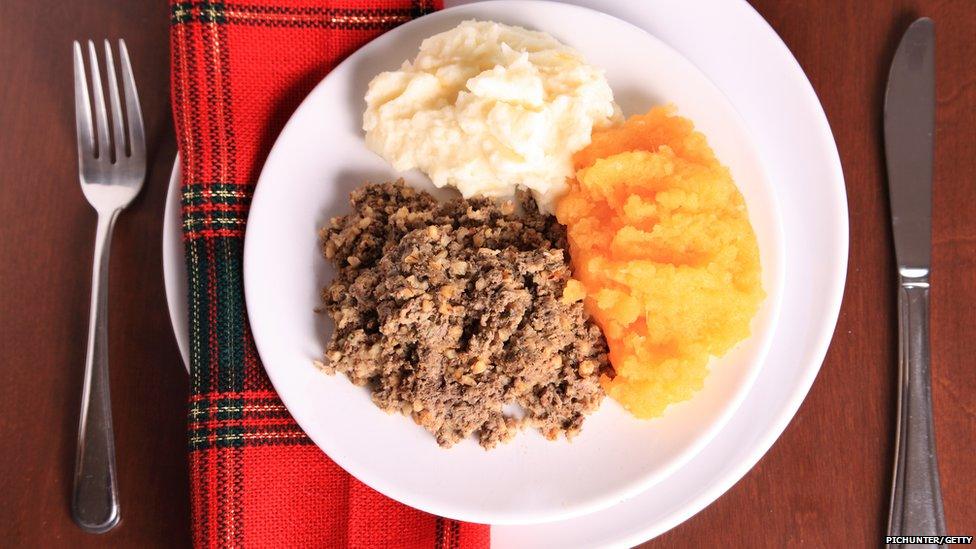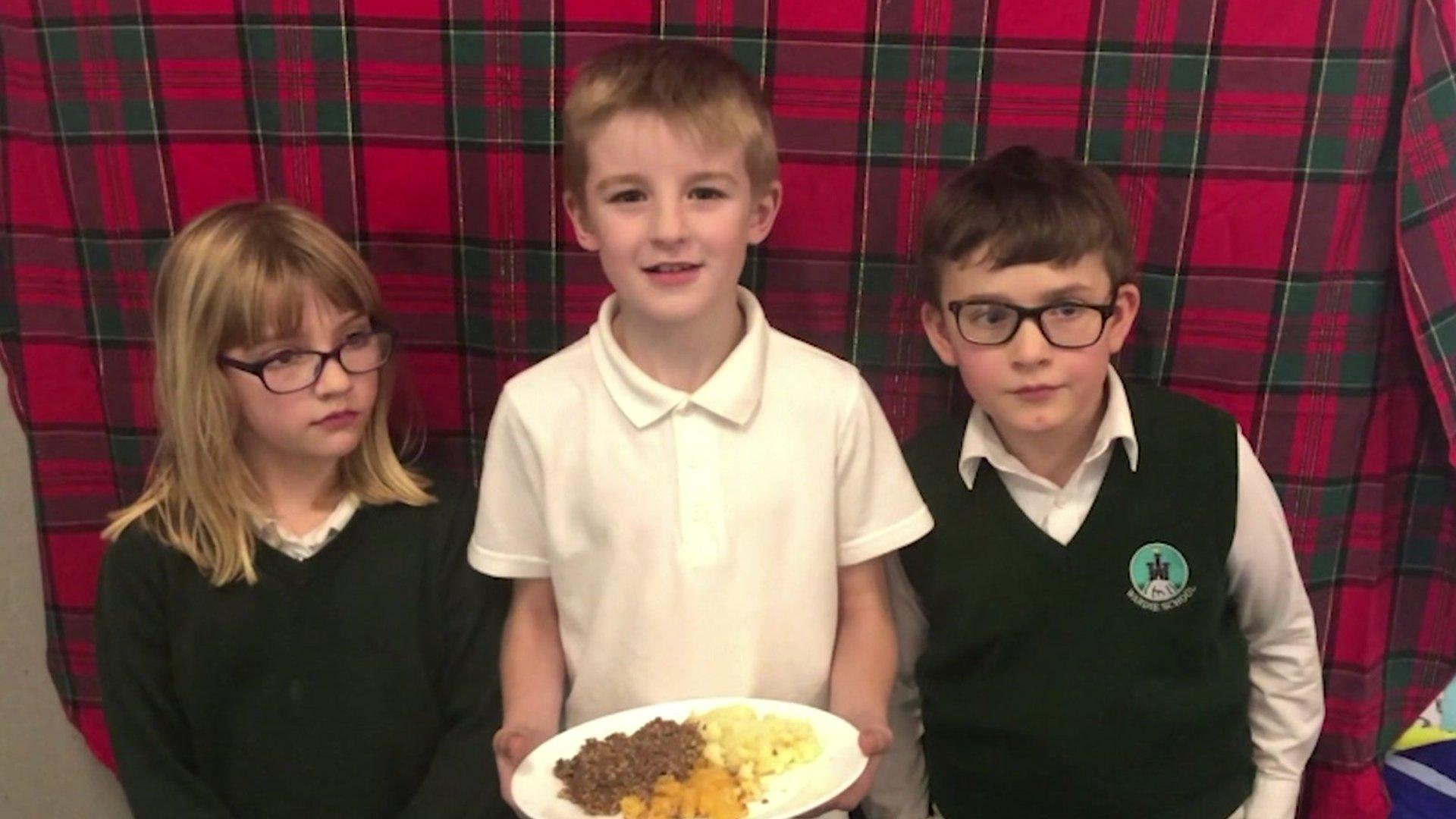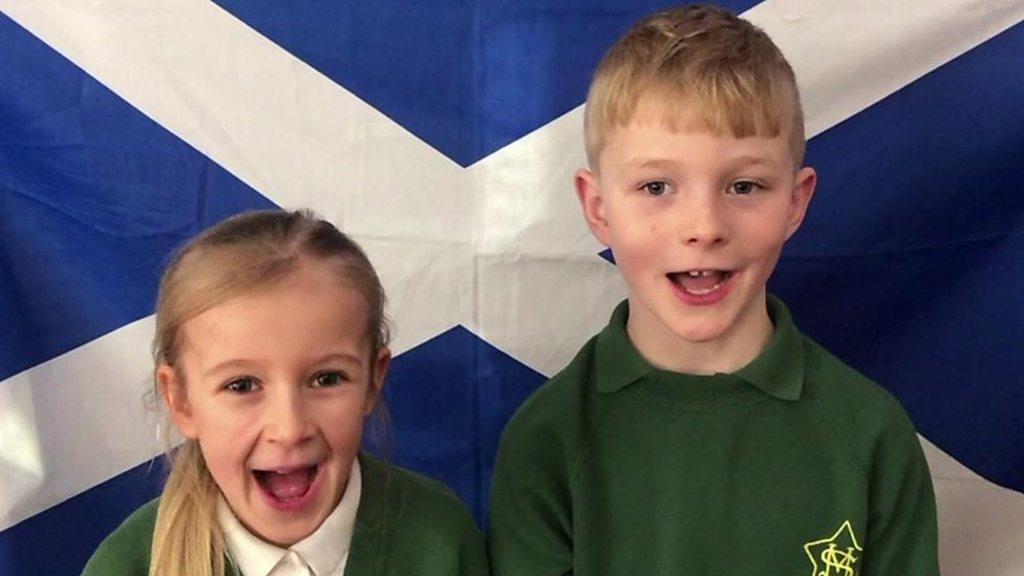Burns Night: What is the occasion all about?
- Published
Jenny finds out about celebrating Burns Night
Get your haggis, bagpipes and tartan ready - 25 January is Burns Night!
The Scottish important national cultural day celebrates the life and work of Robert Burns, a famous poet who is known all over the world.
Burns Night is often celebrated with a Burns supper which usually includes haggis, neeps and tatties.
Haggis is like a big crumbly sausage, neeps are better known as swedes, and you might have guessed that tatties are potatoes!
During this supper, Burns' poetry is recited too.
Who was Robert Burns?

Robert Burns can be found on Scottish bank notes
Affectionately known as Rabbie, Robert Burns was born on 25 January, 1759, in a village in Ayrshire in Scotland.
He was born on a farm, and as he grew up he discovered a love of reading and writing.
He published his first collection of poems in the summer of 1786, and from there published many more famous rhymes, including 'To a Mouse', 'Address to a Haggis' and 'Selkirk Grace'.
Hear how these guys are celebrating Burns Night (2022)
He died in 1796, aged just 37 years old.
However, he left behind a huge legacy, and is considered to be Scotland's national poet, or to use the fancy term, bard.
What happens at a Burns supper?

This is a traditional Burns supper dish of haggis, neeps and tatties
A Burns supper consists of lots of different parts, and there are bits that most people include, although everyone will have their own variations.
The 'Selkirk Grace' usually opens the meal, after the host has welcomed everyone and said a few words.
The main event, the haggis, will arrive to a flurry of bagpipes, after which 'Address to a Haggis' is usually recited before it's eaten.
Other bits of Burns' poetry may get recited as the night goes on, and the Auld Lang Syne can be sung at the end.
- Published25 January 2020

- Published24 January 2019

- Published25 January 2022

